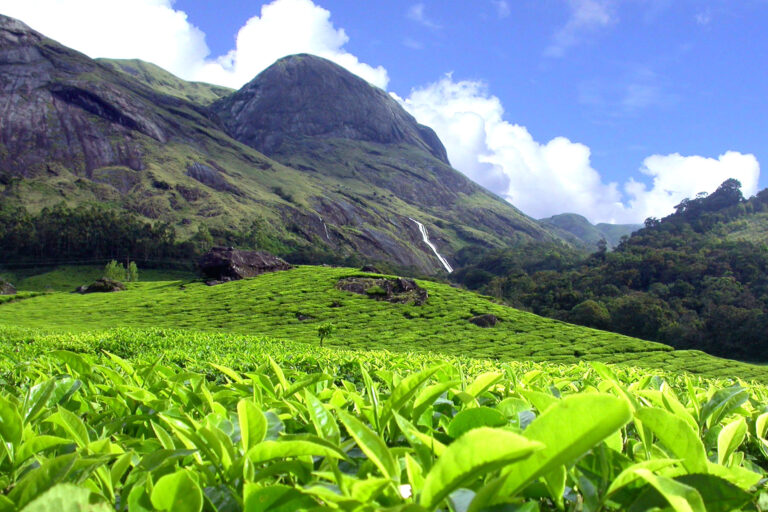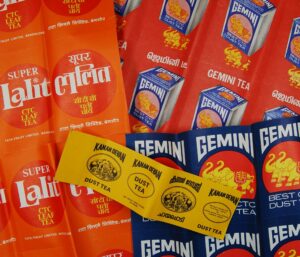 Whats New: JANAL Talks in June: Check our Events!!!
Whats New: JANAL Talks in June: Check our Events!!!  Whats New: JANAL Talks in June: Check our Events!!!
Whats New: JANAL Talks in June: Check our Events!!! 
The history of tea plantations in the Kannan Devan hills near Munnar, Kerala, started with the British, but the name of the hill range honors its indigenous people. In 1790, these hills were visited by the Duke of Wellington, Col. Arthur Wellesley, to defeat Tipu Sultan, marking him the first British man to do so. The ‘planting opinion’ of 1896 records that the Duke, Col. Arthur Wellesley, was dispatched by General Meadows to cut off the retreat of Tipu Sultan at the Kumily gap, which eventually failed. The next visit to the hills was nearly three decades later, in 1817, by Lieutenants Benjamin Swain Ward and Peter Eyre Connor of the Madras Army, for a trigonometric survey. Lieutenant B.S. Ward’s was the first official record of the hills. Two local Mudhuvan tribesmen, Kannan and Devan, guided the initial British arrivals in Munnar. These hill dwellers helped the British explore the area, which led to the naming of the hill range – Kannan Devan.
Roughly 50 years later, in 1862, General Douglas Hamilton, a British Indian Army officer of the Madras Infantry was tasked with finding suitable locations for troops in these hills by the then Governor of Madras – Sir Charles Trevalyan. His response was enthusiastic, describing the area as magnificent. He praised the grand and extensive views, massive cliffs, lush valleys, and picturesque scenery. His words attracted many British visitors eager to witness this breathtaking beauty firsthand. “Surpassingly grand and incomparably beautiful; undulating grassy hills, wooded valleys, rocky crags, overhanging precipices and the green fields of the valley of Unjanad.”- Taken from the Journal Entry of Douglas Hamilton, 1862.
The commercial potential of the stunning hill range became evident to hunters and tourists. When they beheld its grandeur from the summit of Anamudi, they saw the business opportunities. In 1877, a two-person commission confirmed the high range tracts of these hills as being Travancore territory and not part of the Madras Presidency. Munnar became well-known in the 1870s when John Daniel Munro, a British official and Diwan of Travancore, visited during a border dispute settlement between Travancore and Madras. He was captivated by the beauty of the area. Even though Munnar was part of Travancore, it belonged to the Poonjar royal family. Because it was “Jenmam land,” the royal family had complete control over it as the landlords.
Munro was interested in plantations and saw potential in the Kanan Devan hills for growing crops. He quickly went to the Poonjar Palace and met with the head of the royal family, Rohini Thirunal Kerala Varma Valiya Raja, also known as Kela Varma Raja. Munro convinced Kela Varma Raja to lease the Kanan Devan hills to him for a good sum.
In 1877, Poonjattil Koickal Rohini Thirunal Kerala Varma Valiya Raja leased about 1,36,600 acres of land in the Kanan Devan hills to John Daniel Munro for an annual rent of Rs. 3,000 and a security deposit of Rs. 5,000.
Munro established the North Travancore Land Planting & Agricultural Society in 1879. Society members began growing various crops, like coffee, cardamom, cinchona, and sisal, in different parts of the region. However, these crops were eventually abandoned in favour of tea. They discovered that tea was the best crop for the area, with A.W. Turnor being the first to cultivate it. The first tea plantation in the region was initiated by A. W. Turnor in 1879, while in 1880, A. H. Sharp planted tea on approximately 50 acres of land at Parvathi Estate, which is now part of the Seven Mallay Estate.
In 1924, the Munnar plantations faced a major setback due to a devastating monsoon. This event resulted in significant property and human losses. Despite the difficulties, the residents managed to return to normal life within a few months, and extensive replanting efforts took place in many estates.
After India gained independence, this area remained under the control of British companies. In 1971, the Kerala government passed the Kannan Devan Hills (Resumption of Lands) Act, which transferred control of the region back to Indian authorities. Since then, Kannan Devan Hills has been a revenue village.
Munnar, a hill station 1600 meters above sea level, was discovered by the plantation industry in the 19th century and then rediscovered by the tourism industry in the latter half of the 20th century. Travelers from all over the world began to visit this town, which still has a colonial feel and many hotels for guests. People are drawn to Munnar because of its untouched forests, rolling hills, picturesque valleys, streams, waterfalls, vast tea plantations, and winding paths.
What made these green hills famous for tea globally was the land which was organized differently in 1900. It was now owned by the Kannan Devan Hills Produce Company Limited, a joint stock company managed by James Finlay Limited. This solidified the name “Kannan Devan Hills,” and the tea from this area became known as Kannan Devan Tea. This marked the beginning of the Kannan Devan brand.
Till 1946 the hills functioned as a tea plantation under Finlay’s name. The severe famine that occurred in the erstwhile Travancore in 1944 led to the regular demand for the opening of large forest areas for food cultivation. In response to this, the government opened forest lands on an emergency basis for food cultivation. After 1946, a large group of settlers came into these hills to make a living
In 1962, the Finlay Group and Tatas formed Tata Finlay Private Limited. They built a factory in Bengaluru and a plant in Munnar. However, due to administrative changes in India, the Finlays decided to leave. In 1983, Tatas fully bought the company and renamed it Tata Tea Limited, becoming one of India’s largest tea companies with over 30 tea estates. Tata Tea then worked on modernising its tea estates and improving living conditions for its employees.

By the 2000s, the tea industry had changed a lot, so the plantations were restructured to be more sustainable. This led to the birth of the Kannan Devan Hills Plantations Company (KDHP), renamed Kannan Devan Hills Plantation Company Private Limited in April 2005. In 2005, the Kannan Devan Hills Produce Company Pvt. Ltd. was formed and Tata Tea transferred the ownership of its plantations to the new company. Employees of Tata Tea hold a stake in the company.
It became the first tea company mostly owned by its workers. In 2010, Tata Tea Limited changed its name to Tata Global Beverages Limited but continued to support its oldest brand, ‘Kannan Devan Tea.’

In September 11, 2015, KDHP incurred a huge loss due to workers being absent from work which caused severe damage to the standing crop which led to one of the worst financial crises in Kerala. On 31st August 2015, the profit after taxes was Rs. 5.02 crores as against the 15.55 crores in the previous year due to the drop in tea prices. In view of the poor profits the company added more to the Statutory Bonus paid to the workers which they refused to accept as their demand was over 20%. Several conflicts occurred and the company had to put out an appeal notice to restore normalcy. While the company was trying to solve the crisis, the workers boycotted work and even blocked the roads in protest. The mob attacked the Forest Range Office and attempted to assault the MD, IR Manager, and two other colleagues. The conflict is still ongoing.
1790: The Duke of Wellington, then Col. Arthur Wellesley, visits the hills in an attempt to cut off the retreat of Tipu Sultan at Kumaly gap but is ordered to retrace his steps.
1817: Lieutenants Ward and Connor of the Madras Army conduct a survey, with Lieutenant BS Ward’s record being the first official documentation of the hills.
1862: General Douglas Hamilton explores the hills and describes them as magnificent.
1877: A two-person commission confirms the high range tracts as Travancore territory, not part of the Madras Presidency. Though the Munnar region fell under the jurisdiction of the Travancore kingdom, it was the jenmam land of Poonjar royal family. John Daniel Munro, the Diwan of Travancore, who visited the place as part of settling the border dispute between Travancore and the nearby state of Madras obtains the first Pooniat Concession Deed from the Poonjar Chief for the grant of the property called Kannan Thevan Anchanatu Mala.
1879: Munro formed the North Travancore Land Planting & Agricultural Society in 1879. Members of the society started cultivation of crops, including coffee, cardamom, cinchona and sisal in various parts of the region. However these crops were later abandoned when tea was found to be the ideal crop for the region. A.W. Turnor was the first to start cultivation.
1880: The first tea was planted in Parvathi Estate by A. H. Sharp. Sharp planted tea in around 50 acres of land at Parvathi, which is now part of the Seven Mallay estate
1896: Finlay Muir & Company entered the scene and bought 33 independent estates.
1897: The Kannan Devan Hills Produce Company is registered to manage local tea plantations
1900: The Kanan Devan Hills Produce Company constructs the first hydroelectric power House at Pullivasal and establishes the Korangani – Top Station ropeway for transportation.
1915: About 16 fully equipped factories function on the estates. Bullock carts are used for transporting tea leaves.
1924: The Munnar plantations face a major setback due to a devastating monsoon.
1926: The Kundaly Valley Ropeway for transportation of tea and goods is completed.
1964: James Finlay & Co. enter a collaboration with the Tatas for establishing an Instant Tea Factory in Nullatani Estate..
1983: Tatas fully buy the company and rename it Tata Tea Limited. Tata Tea is established, and Asia’s largest Super Tea Factory is set up at Chunduvurrai Estate.
1990s: Tata Tea sets up a fully automated tea factory at Madupatty and starts organic tea cultivation in Chunduvurrai Estate.
2005: Kannan Devan Hills Plantations Company Private Limited (KDHP) takes over the majority of tea plantations in Munnar from Tata Tea Limited. Tata Tea would hold a 19 percent stake in the new company. India’s first Tea Museum (KDHP Tea Museum) is inaugurated.
2006: KDHP ventures into a diversification project under Kundaly Nature Extracts (KNE) for cultivating medicinal and aromatic plants and extraction of oils.
2010: Tata Tea Limited changes its name to Tata Global Beverages Limited while continuing to support the ‘Kannan Devan Tea’ brand.
Kannan Devan Hills Plantation, owned by KDHP, has a history dating back to the 1700s. The tea museum, established on April 1, 2005, showcases the development of tea plantations in the mountainous region of Kerala’s Idukki district on the Western Ghats, near the border of Coimbatore district, Tamil Nadu. Tata Tea opened this museum, which contains artifacts, photos, and machinery illustrating a pivotal moment in Idukki’s growing tea industry.
Located at the Nallathanni Estate, the museum pays homage to the pioneers who transformed Munnar into a major tea plantation hub in Kerala. It displays the evolution of tea processing, from the basic tea roller of 1905 to a fully automated tea factory. Visitors can witness various stages of tea production, including crushing, tearing, and curling, and learn about the creation of different types of Kerala black tea.
The estate’s power generation plant dates back to the 1920s, and the museum also houses a rail engine wheel from the Kundala Valley Railway, which operated between Munnar and Top Station by 1924. Additionally, a section of the museum features vintage furniture and office equipment from the colonial era in Kerala. Tea enthusiasts can enjoy tasting various tea varieties. Lastly, the museum displays a 2nd-century burial urn discovered at the Periyakanal Tea Estate.
Get exciting updates about our events and more